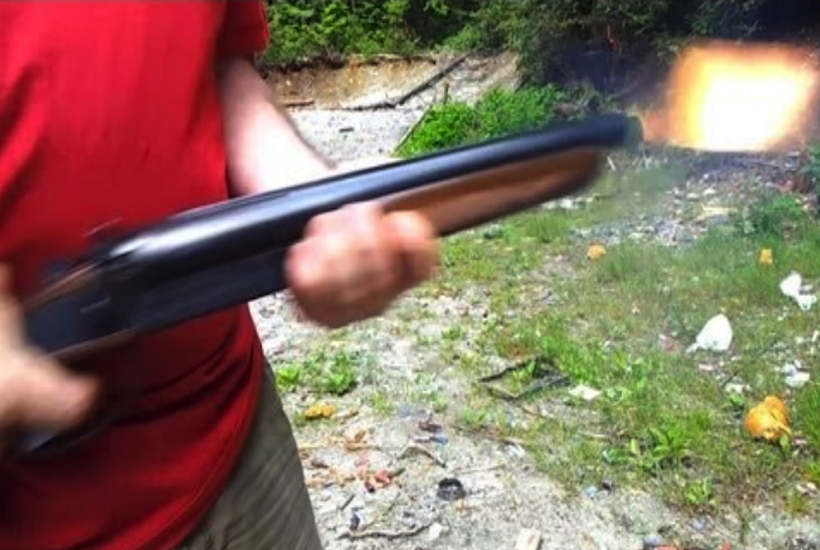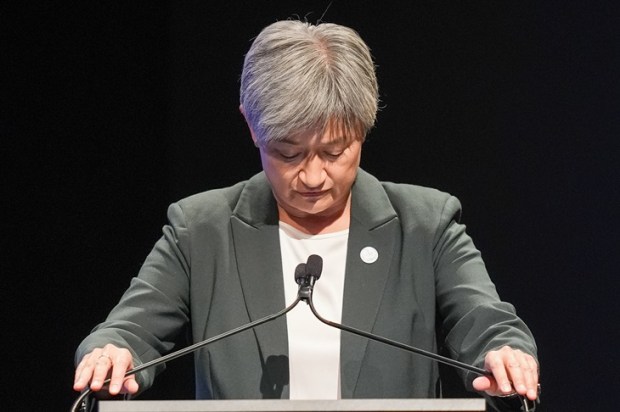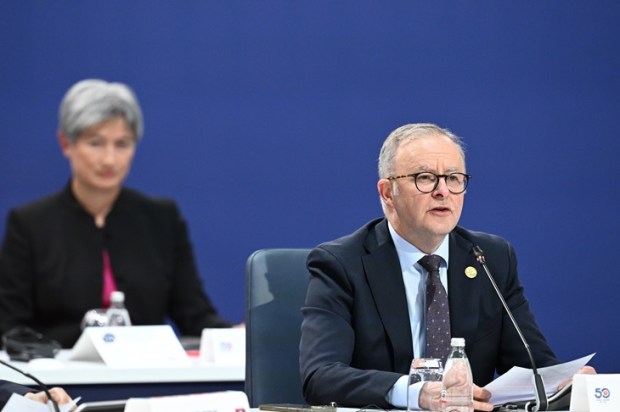In the wake of the most atrocious shooting spree ever seen in the US, we’ve witnessed a spree of another kind, of pompous back-patting about the apparent success of the 1996 firearm law reforms. It’s not a new conversation, but the ever-strengthening, everyman culture of the digital media sees many wading in to scold the Americans for their inability to see the light and follow our shining example.
Despite the irony of my own ovine urge to follow the herd, a piece in The Conversation last week gave impetus to look at a few of the keynote papers referred to by criminologist David Bright.
To an inquiring observer, it would seem that the horrors of Port Arthur caused our national consciousness to undergo a significant shift, seemingly overnight. The worst massacre ever seen (since the shame of our colonial past) made us snap and decide, no more. The astute opportunism of our new leader sent a long-debated Federal framework for firearms regulation scorching its way to enactment like a high-velocity round in only 12 days.
The corresponding drop in the rate of firearm murders, accelerating the already steep rate of fall witnessed through the preceding decade, was heralded as proof positive that the reform was a grand success. The opinionistas crow about it at every opportunity. But is that fair?
Bright’s analysis of the question, ‘Did government gun buybacks reduce the number of gun deaths in Australia?’ deserves credit for the sound academic admission that we really don’t know the answer. Nevertheless, he reiterates the catch-cry echoing around the chamber of news media, commentators, and irrelevant lifestyle blogs: “In the 21 years since more restrictive firearm policies came into effect in Australia, there has not been a single mass shooting in the country.” Howzat, indeed.
It’s a wonderfully reassuring thing to say because it ties everything up in a neat little package. It may be technically correct by the National Homicide Monitoring Program’s (NHMP) convention for defining a ‘Mass Shooting’ (five or more victims, barring perpetrator), but we need to be honest with ourselves, and the rest of the world.
When Allen Xiang, in 2002, took six handguns to Monash University and killed two people and injured five others, split what hairs you like with weasel words like spree-shooting or rampage, but he fired all the ammunition he could and tried to kill as many people as he could. It was a mass shooting.
When Geoff Hunt, in 2014, shot his wife and three children and finally himself in one of the most brutal familicides of our time, perhaps it was not a ‘mass shooting’ by the NHMP definition, but ask yourself this: Can I sit here with a smirk and in good conscience argue, “but he only killed four other people?” In any other country, with no cause to juke the numbers, this would certainly be classified as a mass murder.
Since 1996 there have occurred 11 of the most nation-shaking crimes we’ve ever seen. Granted, none of the ‘mass murders’ were carried out with a firearm, but we seem far more preoccupied with gloating about the apparent success of a taxpayer-funded buyback of semi-automatic and pump-action firearms, than with addressing some still-frightening home truths.
Following the Las Vegas Massacre, Prime Minister Malcolm Turnbull was pleased to announce 51,000 illegal firearms were surrendered in the latest gun amnesty. We must have some of the nicest criminals in the world! Not only did they obediently hand in an estimated sixth of the illegal firearms circulating this country; they don’t use them in mass murders anymore either.
Turnbull, hand protectively over his purple silk tie as if aghast at the sheer evil laid out before him, looks over a table laden with these mechanisms of mass murder. These weapons, we were led to believe, were what enabled mad psychopaths to carry out their twisted will. But are we not alarmed and then confused by the fact that so many of these weapons are still possessed by lawbreakers, in spite of their illegality?
In 1987 we saw one of the worst years in living history, with four brutal massacres sweeping Australian headlines (Top End; Hoddle Street; Canley Vale; Queen Street). The Unsworth Labor government in NSW reacted by introducing a prelude to the 1996 reforms but was trounced at the next election two and a half months later. The politically premature reforms were immediately reversed, confiscated firearms returned, and yet the homicide rate continued its downward trajectory unabated. Did the mere threat of reform bring about a real change, or was there a deeper social influence?
Was the banning and buyback of semi-automatics in any way the cause of the reduction of firearm deaths or massacres in Australia? Have we been conflating the effects of different laws in a homogenous, inaccurate misunderstanding? The removal of semi-automatic firearms may seem intuitively obvious to prevent deaths in a single attack, but perhaps the post-1996 reductions were due to our nation having witnessed its worst massacre of the modern age: ours was a society changed, not by law, but by human nature – It’s these kinds of questions we should strive to answer next.
The unprecedented mass-murder of 35 innocent citizens in 1996 was so shocking to the nation that a collective shift in attitude, driven in no small part by media coverage, was well underway before the announcement of the National Firearms Agreement (NFA). The firearm murder rate continued to plummet, as did suicides. Non-firearm homicides dropped but quickly rose again, and the corresponding suicides took some time to peak and fall. Accidental gun deaths, which had been in decline since 1980, inexplicably climbed their way towards the new millennium.
“We can conceive of no plausible hypothesis as to why the removal of 700,000 guns from the population, the introduction of firearm registration and the tightening of shooter licensing procedures would be associated with an increase in unintentional fatal shootings, however small the number,” lead author Simon Chapman said in his highly-regarded 2006 paper on the issue. Substantial variability of small numbers may have made it difficult to draw a conclusion, but surely not a hypothesis? The research team found no problem with postulating the success of the buyback based on other statistically insignificant correlations.
Chapman et al. also marked with confidence that there were no substitution effects for the decrease in firearm murder and suicide, yet the Australian Institute of Criminology showed a clear divergence between the decreasing number of gun homicides from 1995 on, and an obvious increase in fatal knife attacks from 2000 to 2011.
And last month Chapman, who is credited as the architect of the buyback, seized another opportunity to spruik its “triumph” in ‘Howard’s gun ban lowered Australian firearm deaths by two-thirds’. Unfortunately, the inaccuracy of the headline scored something of an own-goal by contradicting his assessment in 2016: “There was a more rapid decline in firearm deaths…but also a decline in total non-firearm suicide and homicide deaths of a greater magnitude. Because of this, it is not possible to determine whether the change in firearm deaths can be attributed to the gun law reforms.”
Jeanine Baker and Samara McPhedran (2006) were roundly criticised for methodological error in ‘Gun laws and sudden death: Did the Australian firearms legislation of 1996 make a difference?’, but their attempt to highlight other societal factors such as mobile phone use, increased funding for suicide prevention programs, and other aspects of the NFA (like gun safety training, lock-up storage, and cooling-off periods) showed a willingness to pursue underlying social truths, rather than the mere vindication of a political experiment.
In the absence of evidence that it would actually work, the buyback certainly was one of the boldest social experiments in Australia’s history, but the exercise is not yet finished: the analysis is only half-done. There are too many questions that researchers seem unwilling to even attempt to answer, let alone ask out loud.
The most disturbing question raised by the oft-quoted ‘13 mass shootings in 15 years’ is why five of these incidents were characterised by the unthinkably heinous crime of familicide? (There were six if you count back to 1971 but ‘14 mass shootings in 25 years’ doesn’t quite have the same ring to it.)
And in the following 20 years, why did we see another four of these frightening family murders? Not all of them involved firearms, but they cannot be ignored when substitution effects are in question. Never before had modern Australia seen a family bludgeoned to death, or eight children repeatedly stabbed. Even on the evidence before him at the time, one could argue Howard might have achieved a better result by banning the family unit.
We’ve seen the debate about firearm type heat up again over the Adler shotgun. Parents shriek in fear for the safety of their children, as if this lever-action duck gun is the embodiment of the Angel of Death, ready to swoop down and swiftly pluck their first-born unless they mark the door with outraged Facebook comments and fierce blog posts. With no evidence to show an Adler ban would alter any crime, such hysteria is beneath us.
But facetiousness is not called for here. What we need is an end to myopic pride in our gun laws, and the resumption of intellectual honesty to determine which of these reforms worked, which had little to no effect, and identify the other factors at play. Pundits should read the reports before regurgitating, inspect the graphs before gloating, and let their curiosity be stirred by the red flags of confirmation bias, found fluttering on so many pages.
To pride ourselves in ignorance is a danger in itself. If we are honest about the fact that this country still sees mass murder and familicide with alarming regularity, only then, once we actually know what the bloody hell we’re talking about, can we present a more culturally acceptable, more legislatively effective, and above all humble example that might stand a chance of helping to reduce the tragedy of gun violence in the US.
Ben Hagemann is a freelance journalist. In 2012 as a new firearms licensee he was a member of the SSAA for insurance purposes.
Illustration: YouTube.
Got something to add? Join the discussion and comment below.
Got something to add? Join the discussion and comment below.
Get 10 issues for just $10
Subscribe to The Spectator Australia today for the next 10 magazine issues, plus full online access, for just $10.


























Comments
Don't miss out
Join the conversation with other Spectator Australia readers. Subscribe to leave a comment.
SUBSCRIBEAlready a subscriber? Log in